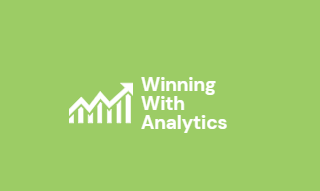Executive Summary
- Data analytics is data analysis for practical purpose
- The three D’s of analytics are Decision, Domain and Data
- Data analytics is a key component of an evidence-based approach to decision making
- Data analytics consists of four modes – exploration (descriptive), modelling (diagnostic), projection (predictive) and decision (prescriptive)
Data analytics is a much used descriptor these days with its own myths and legends, usually of its successes. The best known of these analytics myths and legends include exploding manholes, vintage wine, pregnant teenagers, Moneyball, Google Flu and Hollywood blockbusters. But what is data analytics?
A useful starting point is Wikipedia’s definition that data analytics is “the discovery and communication of meaningful patterns in data” which highlights the importance of communication. Data analytics is not just data analysis but also the effective presentation of these results. Data analytics always revolves around its intended audience. My own preferred definition is that data analytics is data analysis for practical purpose. This definition puts the stress on practical purpose. Being an empirically-minded academic in a business school, I am surrounded by data analysis but, much to the consternation of some of my colleagues, I have often said that academics don’t tend to do data analytics. Data analysis in business schools like other university faculties, especially in the social sciences, is primarily geared towards developing the academic discipline by publishing peer-reviewed journal articles. Data analytics is data analysis for practical, not disciplinary, purpose. Academic research does not necessarily produce actionable insights whereas the whole point of data analytics is to provide an evidential basis for decisions on what to do. Effective data analytics is always what I now call “impact theory” – using data to understand the world in order to intervene to change the world for the better. Analytics as impact theory is the guiding vision of Winning With Analytics.
Data analytics can be summed up the three D’s – Decision, Domain and Data. Data analytics is driven by the purpose of informing decisions by providing an evidential basis for decision makers to decide on the best available intervention to improve performance. Data analytics can only be effective if the data analysis is contextualised so that the practical recommendations are appropriate for the specific domain in which the decision makers are operating. And data analytics by definition involves the analysis of data but that analysis must be driven by the decision and domain, hence why data is listed last of the three D’s.
The essence of data analytics is improving performance by knowing your numbers. Whatever type of organisation – business, sport, public service or social – and irrespective of the level within the organisation, management is all about facilitating an improvement in performance. Management is about getting the best out people (i.e. efficacy) and the most out of the available resources (i.e. efficiency). Ultimately, data analytics is about producing actionable insight to improve efficacy and efficiency.
Data analytics is often seen as just reporting key performance indicators (KPIs). Reporting KPIs is one of the tasks of business intelligence. But data analytics is much more than reporting KPIs. Indeed one important task of data analytics is to identify the most useful set of KPIs. (The choice of KPIs will be the subject of a future post.) The various roles of data analytics can be summarised by the four modes of analytics:
- Exploration (what has been the level of performance?) – the descriptive role of summarising performance using descriptive statistics and data visualisation
- Modelling (why has performance changed?) – the diagnostic role of forensically investigating the causes of variation in performance levels
- Projection (how could performance be improved?) – the predictive role of projecting future performance based on recent performance trends and possible interventions
- Decision (what should be done?) – the prescriptive role of recommendations on the most appropriate intervention to improve current performance levels

4 thoughts on “What is Data Analytics?”